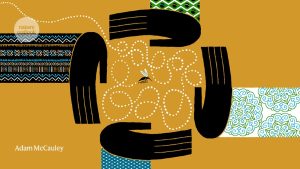
The elimination of Malaria has been a challenge for scientists
The challenges of malaria control: Combining artemisinin with partner drugs could lead to better malaria control in India, and the case of P. falciparum
A lack of money is an obstacle to progress. Funding for malaria control in 2021 was estimated at US$3.5 billion, less than half of the $7.3 billion that was recommended to hit the 2030 target. It’s hard to imagine that this funding gap will be plugged soon, since the world is dealing with the economic shocks of the COVID-19 pandemic and the war in Ukraine. Other challenges are just getting started. Drugs based on artemisinin, which kill malaria parasites, are among the world’s best weapons against the disease. Drugs are losing their effectiveness in Africa, which has a large number of cases. Malaria can spread to new parts of the world as a result of climate change.
The speed at which this happens, however, could be influenced considerably by the drugs’ design. Some mechanisms of action will be easier for parasites to resist than others. Typically, the more important the function is to Plasmodium, the less likely it is that the parasite will develop resistance to the drug that interferes with it. It is possible to target the important biological processes within the parasites using multiple drugs and thus delay or prevent the development of resistance.
Despite the flurry of research, concerns remain that some of the non-artemisinin drugs in development might not be able to overcome existing resistance. Guérin said most of those in late development will be combined with partner drugs that have already been used. The new compounds are likely to develop resistance if those partner drugs develop resistance, or if they have already developed resistance.
The deployment of ACTs has made it clear that there is a strong basis for this concern. The first-line drug against uncomplicated P. falciparum in India in 2010 was a combination of artesunate and partner drug Sulfadoxine and pyrimethamine. In three years, the combination had to be changed in northeastern India because of resistance to it.
Phase II trials, in which the combination was given daily for three days, suggest it is safe and effective against both P. falciparum and P. vivax — including artemisninin-resistant parasites. Efficacy might meet the high bar set by ACTs, says Guérin. Medicines for Malaria Venture is partnering with a Swiss pharmaceutical manufacturer to start a phase 3 trial. Results are expected by 2025.
Artemisinin’s antimalarial properties are thought to stem from a structural feature of the molecule called a peroxide bridge. The iron in the parasites’ diet makes their structure break down and release the free radicals that can damage their vital cell structures. The result is that artemisinin and its derivatives, including artesunate, artemether and dihydroartemisinin, swiftly reduce the number of parasites in a person’s blood. Artemisinin is about 90% effective in curing uncomplicated malaria (a form characterized by fever, headaches and muscle pain).
In Rwanda, parasites with one PfK13 mutation, which is associated with delayed clearance, were found in the blood of one in five people taking part in an antimalarial drug trial in the capital Kigali between 2018 and 20195. Uganda and Eritrea have reported resistance related changes. Fortunately, the partner drug lumefantrine is still effective, and failure rates of treatment in Rwanda and Uganda have so far remained below 10%.
Wells says the impact on individuals seems to be small. The longer clearance time gives the parasites more opportunity to develop resistance to the partner drug. “If the partner drug fails, then the combination does not work,” says Wells.
The consequence of resistance to artemisinin is that it can take up to one month to clear parasites in some cases.
Only five of the 150 or so species of parasites are known to cause Malaria in people. Treatment depends on which species a person is in, and most cases can be caused by either of the two parasites.
The first-line treatment for P. vivax is chloroquine. This is a synthetic version of quinine, which is derived from the bark of cinchona trees. chloroquine was first used against P. falciparum, the most prevalent Malaria in Africa, in 1934. Over time, resistance came about. P. falciparum mutated in a way that helped it to clear the drug from its system, reducing its effectiveness and forcing a change of tack. Artemisia annua is also known as sweet wormwood, and it is a compound used in the treatment of P. falciparum infections.
We’re pleased to recognize the financial support received by Ehime University, Medicines for Malaria Venture, Nagasaki University and Malaria. The Bill and Melinda Gates Foundation gave money to No More Japan to produce this Outlook. Nature is responsible for all editorial content.

